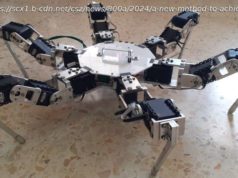 Azure Machine Learning (Azure ML) is a SAAS cloud offering by Microsoft. The advantage of Azure ML is that it provides a UI-based interface and pre-defined algorithms that can be used to create a training model. It also supports R and Python script integration. This article explains how to create a training model and then deploy it as a Web service. We will create a «book recommender» model as an example.
Azure Machine Learning (Azure ML) is a SAAS cloud offering by Microsoft. The advantage of Azure ML is that it provides a UI-based interface and pre-defined algorithms that can be used to create a training model. It also supports R and Python script integration. This article explains how to create a training model and then deploy it as a Web service. We will create a «book recommender» model as an example.
Before we start with the actual experiment, let’s look at the prerequisites.
Figure 1: Creating the workspace
Figure 2: Search results
Navigate through the steps and finish the workspace creation. Once the workspace is created, navigate to the workspace and click «Launch Machine Learning Studio. »
Figure 3: Launching Machine Learning Studio
ML Studio is a UI-based editor that provides a set of predefined algorithms to create a training model. The most popular algorithms have already been created, ready to be used in an experiment. ML Studio gives an easy and a quick way to create ML experiments and validate them.
Let’s understand it with the help of an example. In this example, we will create a book recommender experiment. We will upload two new datasets, » book-ratings » and » book «. The » book » is a master set of books with the following columns: ISBN , Book-Title , Book-Author , Year-of-Publication , and Publisher. The » book-ratings » has the following columns: User-ID , ISBN , and Rating.
Navigate to ML Studio https://studio.azureml.net .
On the left panel, select «Dataset;» then, click the «New» button as shown in Figure 4:
Figure 4: Starting a new dataset
Clicking «New» opens up a screen to upload a new csv file. Click «From Local File» and upload the file. Because only one file can be uploaded at a time, we need to do this action twice to upload » Book Ratings » and » Book » data.
Figure 5: Uploading a local file
Clicking «From Local File» opens up a dialog window, as shown in Figure 6:
Figure 6: The Upload a new dataset window
Choose a file to upload. Leave the «Select a Type for the new dataset» as «Generic CSV File with a header (.csv)» as is and save the changes. Repeat the same process for Books.csv as well.
Once the datasets are created, we are ready to create an experiment. Select Experiment from the left panel (as seen in Figure 5) and click «New. » Select «Blank Experiment,» as shown in Figure 7.
Figure 7: The Blank Experiment window
This opens a canvas with a panel on the left with a number of modules listed. These modules can be dragged-dropped on the canvas, as in Figure 8:
Figure 8: The canvas with a panel and modules
Give the experiment a name—for example, «Books Experiment. » Expand «My Datasets» on the left panel (refer to Figure 8), select «Book rating,» and drag-drop it on the canvas. Right-click the circle and click Visualize to see the data and the column heading names (see Figure 9).






